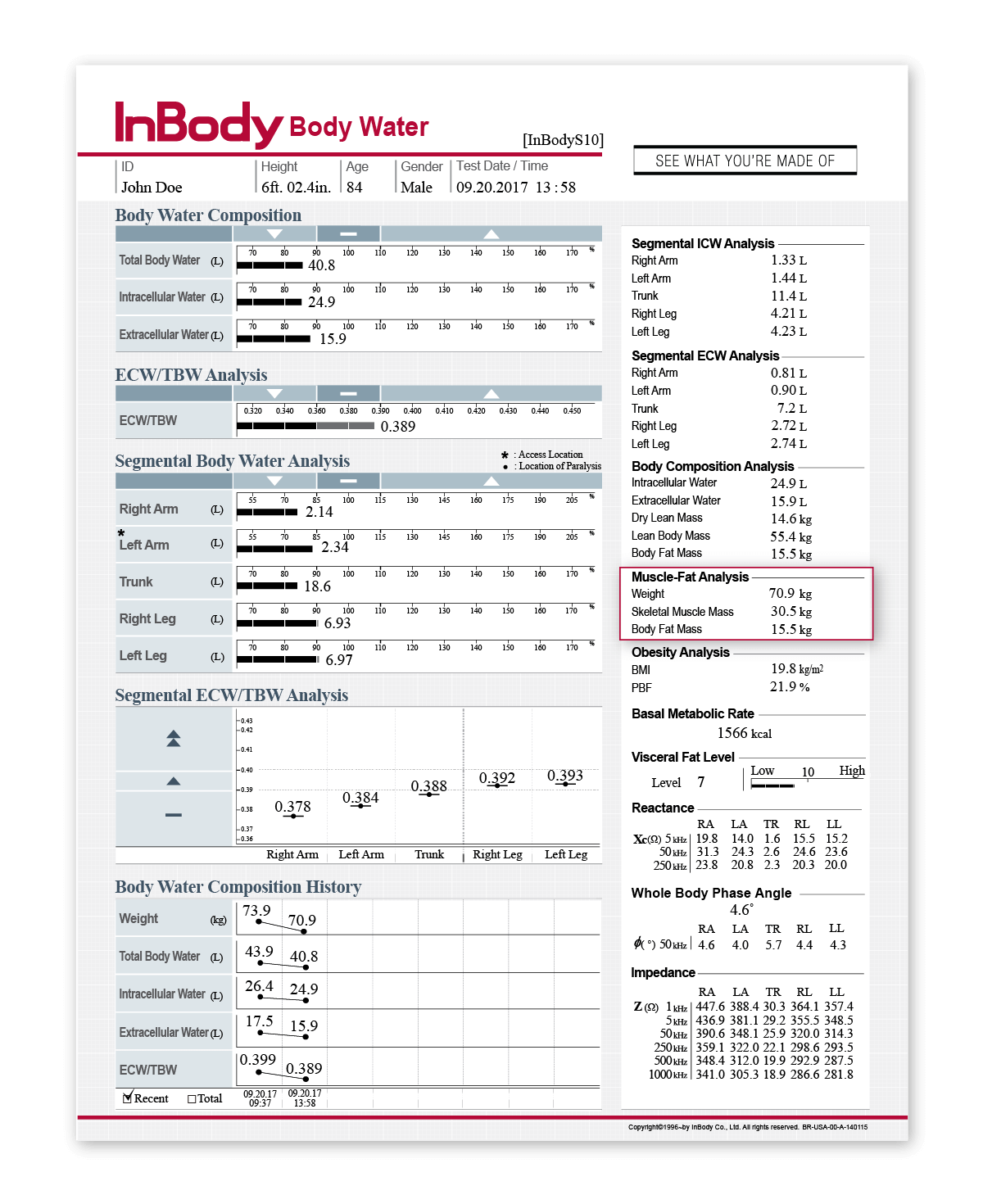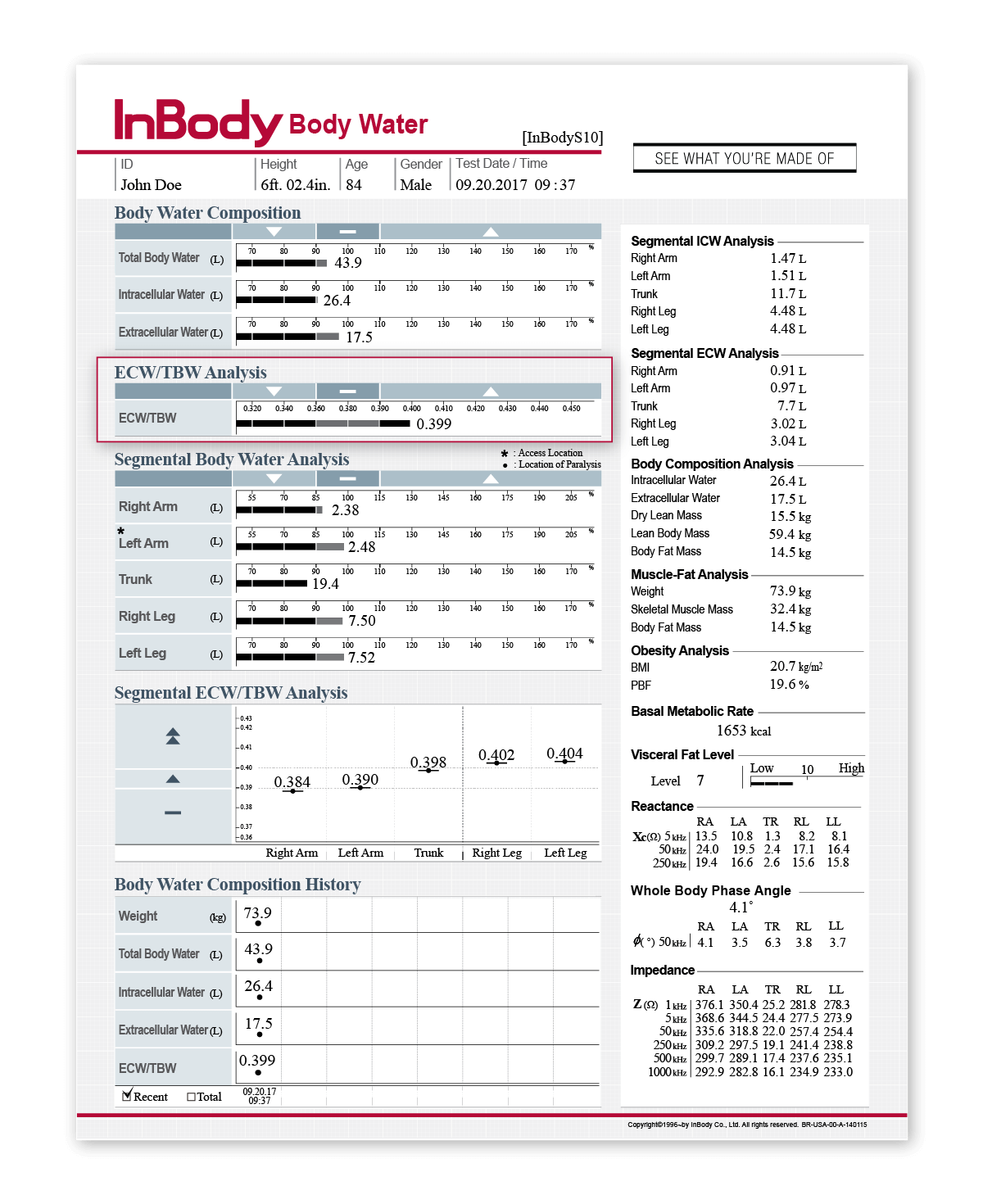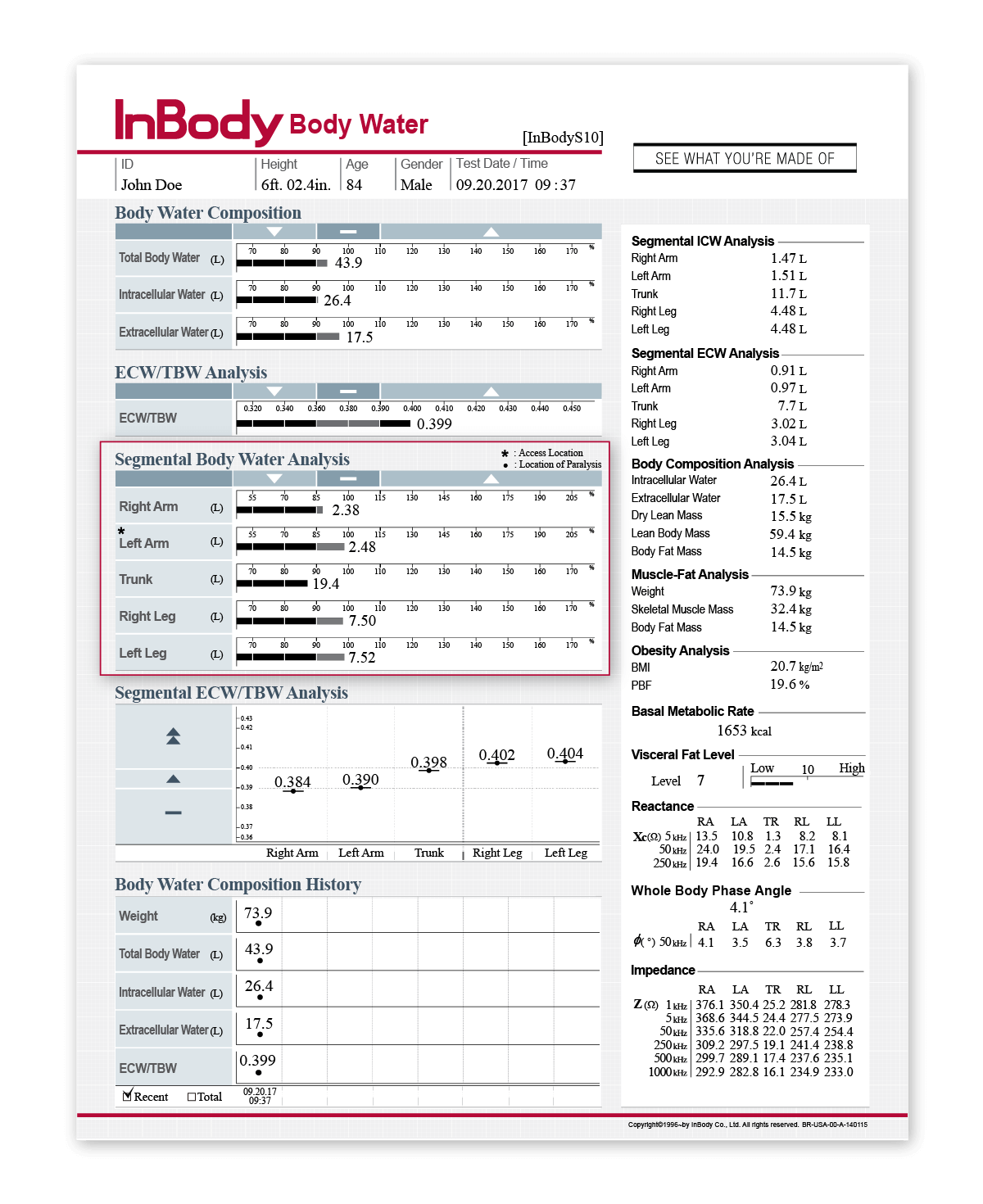
InBody devices take the guesswork out of dialysis treatments to help identify the most effective treatment options for the patient and obtain the ideal goal weight. In 60 seconds, professionals can use the InBody to:
“Overhydration as assessed by ECW/TBW is prevalent in adult PD patients, and is associated with loss of residual renal function, inflammation, malnutrition and hypertension.”
“BIA is an attractive method because it is safe, easy to use, noninvasive, and relatively low cost. BIA-derived parameters have therefore been investigated as novel nutritional markers, especially in patients with ESRD who are receiving maintenance hemodialysis..”
“MF-BIA was superior…in the evaluation of body water distribution in end-stage renal disease and other clinical disorders of fluid volume and/or distribution and validation for assessment of body water in HD patients.”

Dialysis vintage can disrupt lifestyle habits including diet and exercise, leading to malnutrition and muscle loss. Identifying changes in body composition allows dietitians and nutritionists to adjust nutrition plans and educate patients on importance of muscle and fat balance.
Restrictions to normal food intake and exercise can lead to malnutrition changes to body composition that can complicate the setting of appropriate dry weights. The InBody test tracks changes in body composition so dietitians and nutritionists can educate patients on dietary and exercise needs to promote muscle and fat maintenance. Understanding changes specific to each patient allows professionals to develop specific dietary recommendations based on individual needs.


Doctors rely on indirect measures of fluid retention to determine how much fluid to remove or when to stop dialysis treatments, often leading to intradialytic complications. Direct fluid measures increase the precision with dialysis treatments and the establishment of goal weight for patients.
By understanding changes in body composition and the accumulation of fluids during the intradialytic period, physicians can determine how much water to remove and achieve an appropriate goal weight. Setting goal weights based on objective measures of body composition and fluid levels, physicians can avoid intradialytic complications such as hypo- or hypertensive episodes, increasing the success of dialysis treatments. Relieving these symptoms in patients leads to better long-term outcomes and attendance of appointments.


Intradialytic weight gain can be masked by the loss of muscle and fat mass. Professionals rely on the indirect practice of pitting edema to identify changes in fluid levels. Objective measures of body water help identify water retention as a form of weight change independent of changes in muscle or fat mass.
Nephrologists can use Segmental ECW/TBW Analysis to distinguish fluid accumulation from muscle and fat composition, allowing for more accurate tracking of fluid overload independent of nutritional status. This will allow physicians to set proper goal weights, confirm fluid volumes post-dialysis, and make more appropriate adjustments of patient goal weights long-term.


 DIRECT SEGMENTAL MEASUREMENT (DSM)
DIRECT SEGMENTAL MEASUREMENT (DSM)Direct Segmental Measurement (DSM) measures water, muscle mass and fat mass in the five body segments: right arm, left arm, left leg, right leg and trunk. By measuring each segment of the body separately, the InBody provides an in-depth analysis of the patient’s muscle-fat and fluid balance in each segment independently. Identifying the patient’s lean and fat distribution allows a better assessment of associated health risks, and segmental ECW/TBW can be used to identify systemic or localized inflammation resulting from obesity
 MULTIPLE FREQUENCIES
MULTIPLE FREQUENCIESInBody devices use multiple frequencies to measure body water more accurately than commonly used methods like pitting edema scores. These high and low frequencies are able to measure both intra- and extracellular water, producing more precise measurements of body water compartments. Having an accurate measure of the different water compartments can indicate fluid imbalances or water retention stemming from kidney dysfunction and can be used to monitor changes in fluid balance following dialysis treatment.
 8 POINT TACTILE ELECTRODES
8 POINT TACTILE ELECTRODESInBody devices use 8-Point Tactile Electrodes to ensure that measurements always start in the same place, test after test. This technology creates precise and reproducible results, ensuring the results professionals are seeing are genuine changes happening to their patient and are not due to error.
 NO EMPIRICAL ESTIMATIONS
NO EMPIRICAL ESTIMATIONSInBody devices do not rely on empirical data or pre-loaded data. Age, gender and ethnicity does not change an individual’s results, an important factor for nephrology professionals as renal dysfunction affects each patient differently. By not relying on pre-loaded data, nephrology professionals know that the data they are obtaining on their patient is based on that patient alone. Therefore, any changes that are happening to a patient reflects a genuine change in their body composition and fluid levels.

